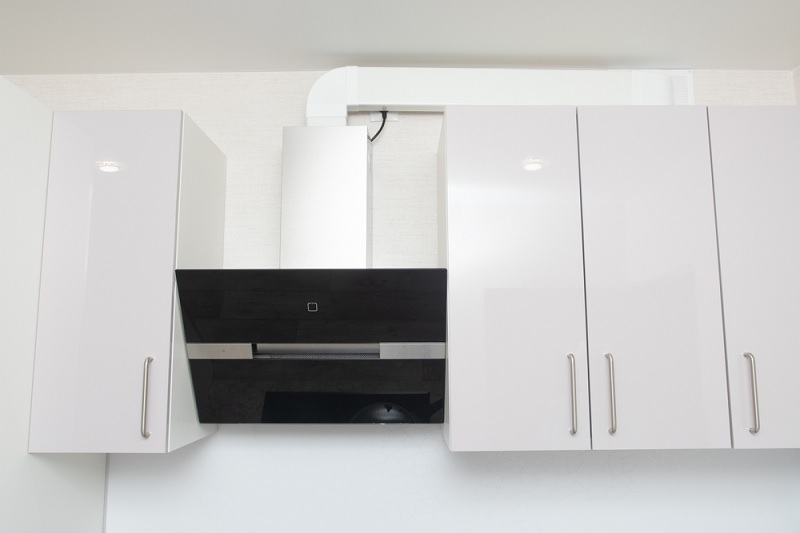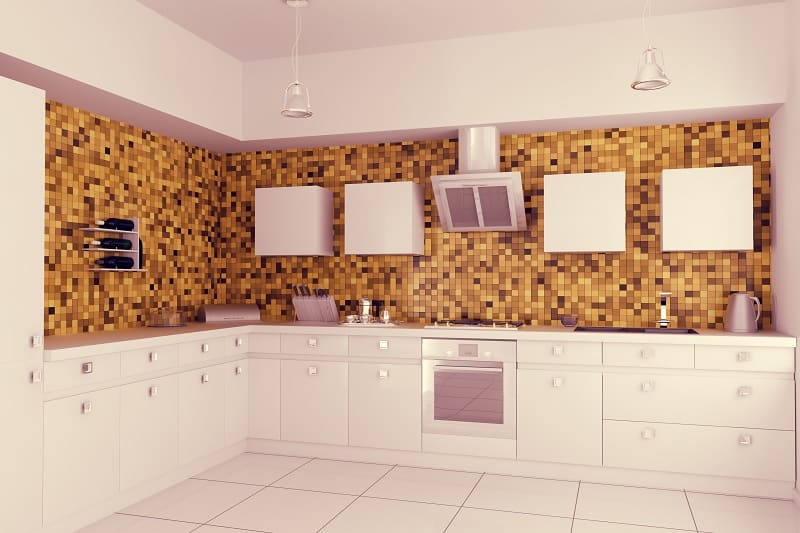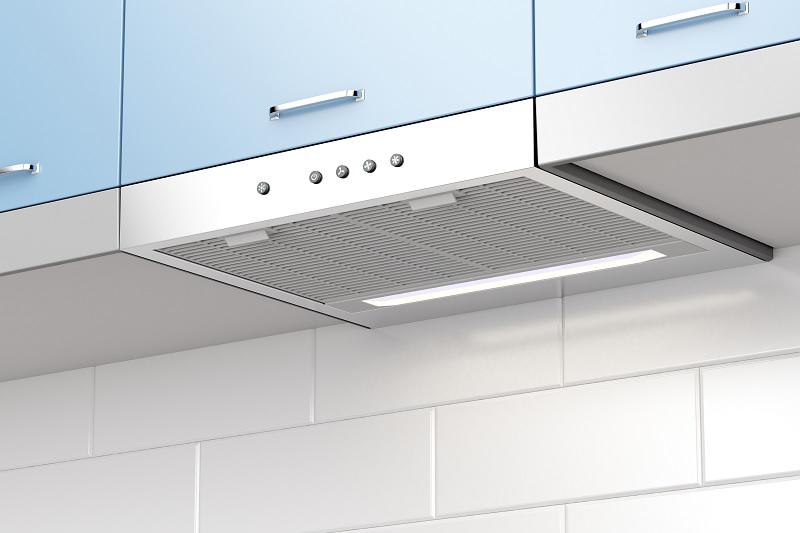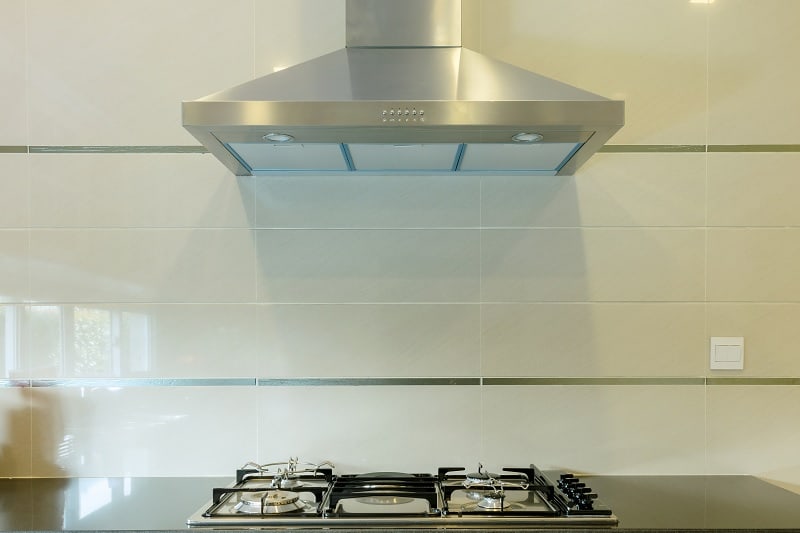If you want to create a designer look in your kitchen, angled cooker hoods can be a great option with their sleek, geometric shape.
Angled cooker hoods are also perfect for smaller kitchens, and the sloping design is perfect for accessing your cooking space and keeping an eye on your pots and pans while you cook.
Angled cooker hoods often come with the latest handy features to make cooking easier. These features can include:
- LED downlights to illuminate the whole cooking area
- Climate control sensors which monitor steam and odours and adjust the power level automatically
- Touch control displays
But despite their ultra-modern appearance and impressive features, some users claim that angled cooker hoods aren’t as effective as traditional flat cooker hoods which cover more of the surface area above the hob. So, do angled cooker hoods really work?
The Importance of Extraction Rate
As long as your angled cooker hood has the right extraction rate, it should would work just as well as other hood types.
Extraction rates determine how quickly the air is changed in your kitchen when cooking, and can make a huge difference to how well any cooker hood works in your kitchen.
If your cooker hood does not have a high enough extraction rate for the size of your kitchen then you will find that it takes much longer to clean cooking smells.
Different cooker hoods come with different extraction rates, and most experts recommend that a cooker hood should change the air around 10 to 12 times every hour.
As a basic rule, the larger your kitchen is the higher the extraction rate should be – and this will be even higher for open plan kitchens that join onto other rooms.
We’ve created an online calculator here which you can use to work out the recommended extraction rate for your kitchen, or you can use the following formula as a rough guide (all units in metres):
- Kitchen width x kitchen length x kitchen height x 10.

What Is a Good Extraction Rate for Cooker Hoods?
Extraction rates for angled cooker hoods can vary considerably, with some models having an extraction rate of 240m³/h or less and some with impressive extraction rates of 830m³/h or more.
But how much extraction power do you really need to effectively remove cooking smells and steam from your kitchen?
The average size of a kitchen in the UK is approximately 30 m³, and an angled cooker hood with an extraction rate of 300 m³/hour should be able to replace all the air in the kitchen in just six minutes.
Most angled cooker hoods have an average extraction rate of around 300-500 m³/hour, and anything higher than this would be classed as fairly powerful.
The majority of angled cooker hoods should therefore have a high enough extraction rate for most domestic kitchens.
Many models also utilise advanced technology that can help even further to keep your kitchen free from steam and cooking smells.
How Do You Install an Angled Cooker Hood?
Angled cooker hoods can be easily mounted onto walls or ceilings using suitable screws, and can be fitted by anyone with fairly basic DIY skills, but it’s important to follow the exact installation instructions to prevent overheating.
Hoods should usually be placed at the recommended distance of between 750mm (for gas) or 650mm (for electric) above your hob – always check the manufacturer’s guidelines.
Summary
Angled cooker hoods are the perfect solution for anyone short on kitchen space and they’re stylish enough to complement any modern kitchen.
Angled cooker hoods may have a reputation for not working as well as traditional-style cooker hoods, but as long as you look for a model with an extraction rate that’s sufficient for your kitchen size you should find it a reliable method of keeping your kitchen clean and free of cooking smells.
See our roundup of the most powerful cooker hoods here.

Chef’s Pick is your guide to the best kitchen equipment and appliances in the UK.
We help you understand the confusing world of cookers, ovens and cookware so you can get the most out of your kitchen.







